How to Fold a Quilt for Storage
Properly storing your quilts is key to extending their lifespan. Believe it or not, proper storage begins when you fold your quilt!
Folding quilts on the bias, in addition to regular re-folding, can help lengthen the lifespan of your quilt. Bias folding can help reduce permanent deep creases in the fabric while they’re in storage. Folding on the bias means folding the quilt at an angle. Because the bias has more give, it will help keep the quilt crease-free.
Learn how to fold a quilt on the bias and lengthen the life of your quilt with this simple step-by-step tutorial!
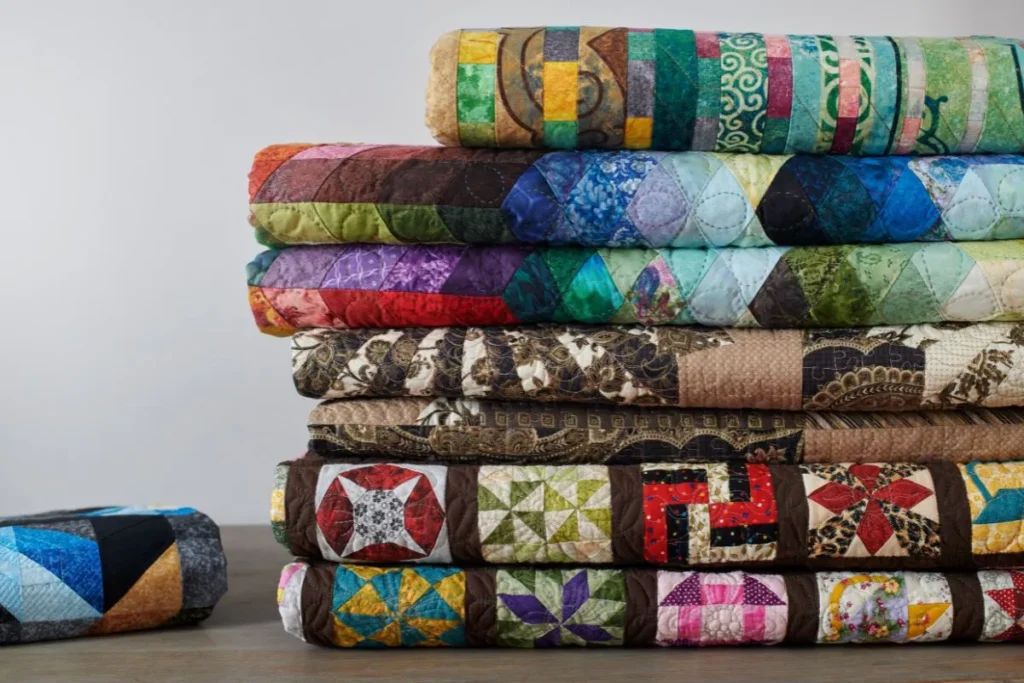
Why Should You Fold a Quilt on the Bias?
The bias of your fabric is the area that falls between the straight and cross grains. The bias stretches and is much more forgiving than the straight grains when your quilt is complete. If you fold your quilt on the straight grains, permanent creases can form in your quilt.
While folding the quilt on the straight grain for short periods is okay, if you fold them this way for long-term storage without regularly re-folding your quilt it can be detrimental to the lifespan of your quilt.
Once permanent creases form, those creases will weaken the fabric and batting in your quilt and can lead to tears and holes. Tears will happen more quickly if there are seams where the quilt creases.
Because bias folding reduces creases, it can in turn lengthen the life of your quilt and help it keep its structural integrity.
This is why folding on the bias is a great option for storage and trust me, folding a quilt on the bias is way easier than it sounds!
How to Fold a Quilt on the Bias
Here’s a video tutorial if you prefer a video format!
Here’s a quick step-by-step photo tutorial to show you exactly how to fold your quilt on the bias for long-term storage:
Step 1: Lay your quilt face down on a flat surface. You can lay your quilt face up if you want the front protected. I fold mine face down so I can easily see what quilt it is without having to unfold it.
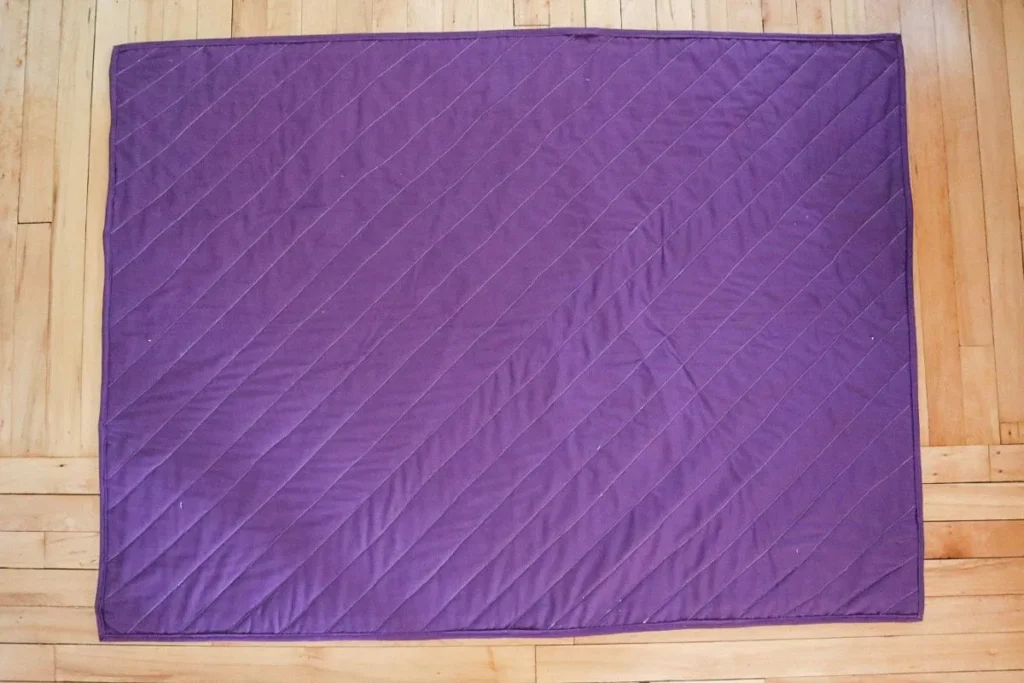
Step 2: Take the bottom corner of your quilt and fold it up onto your quilt. This will form a triangle if your quilt is square. If your quilt is a rectangle, it should look like the photo pictured below.

Step 3: Take the unfolded corner of your quilt and fold it in on itself. If your quilt is larger, you will need to fold it in on itself one more time to make it smaller.
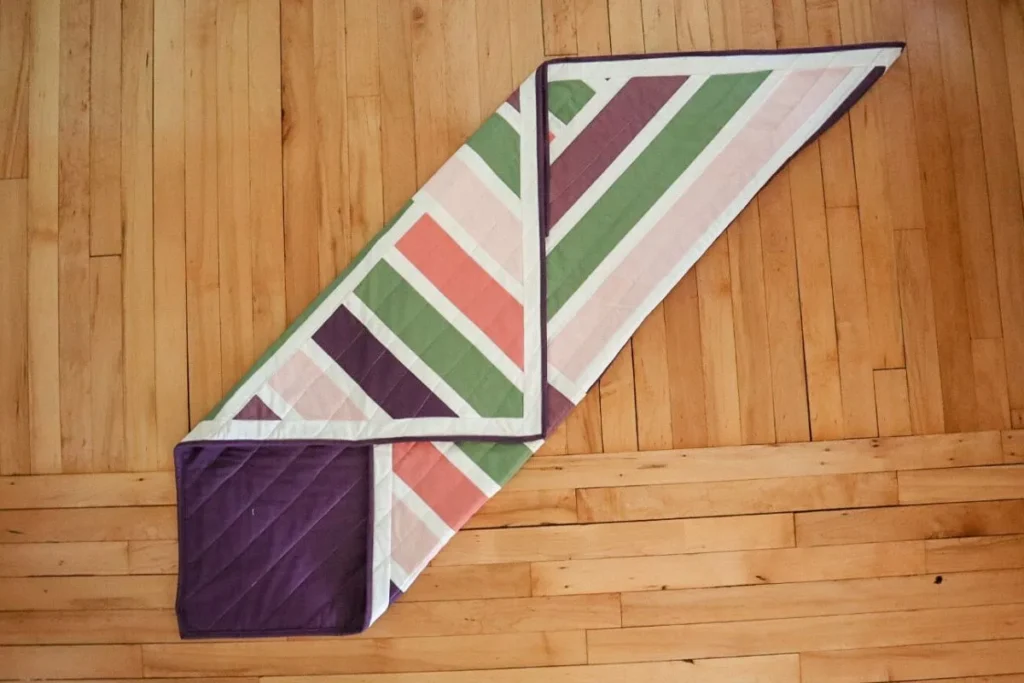
Step 4: Fold one side of the quilt into the center
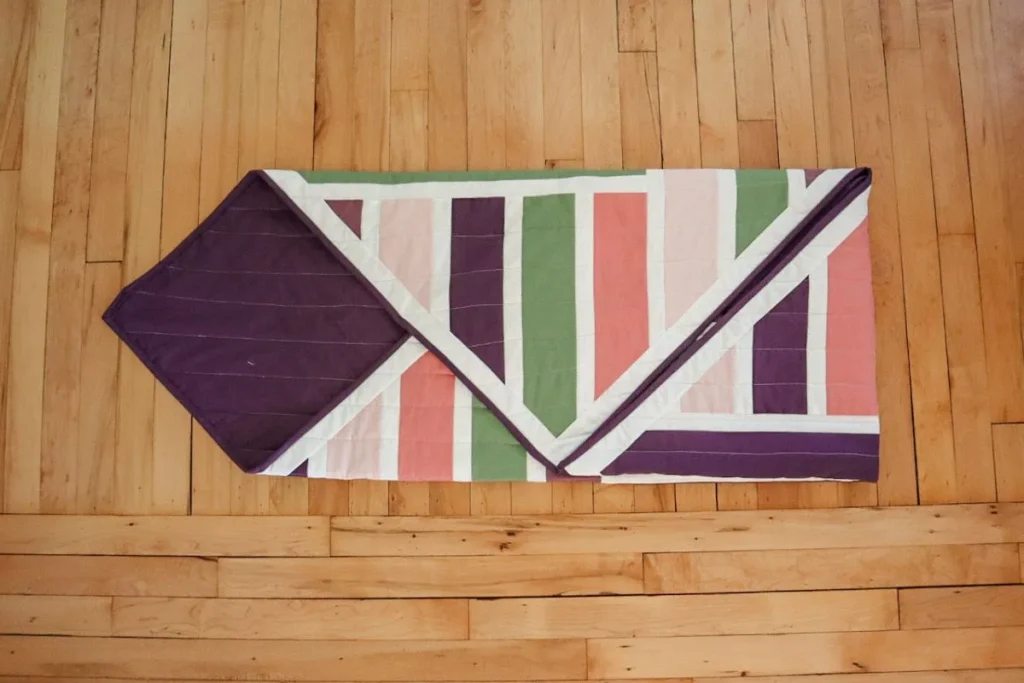
Step 5: Fold the other side into the center

Step 6: Fold the quilt over onto itself one more time
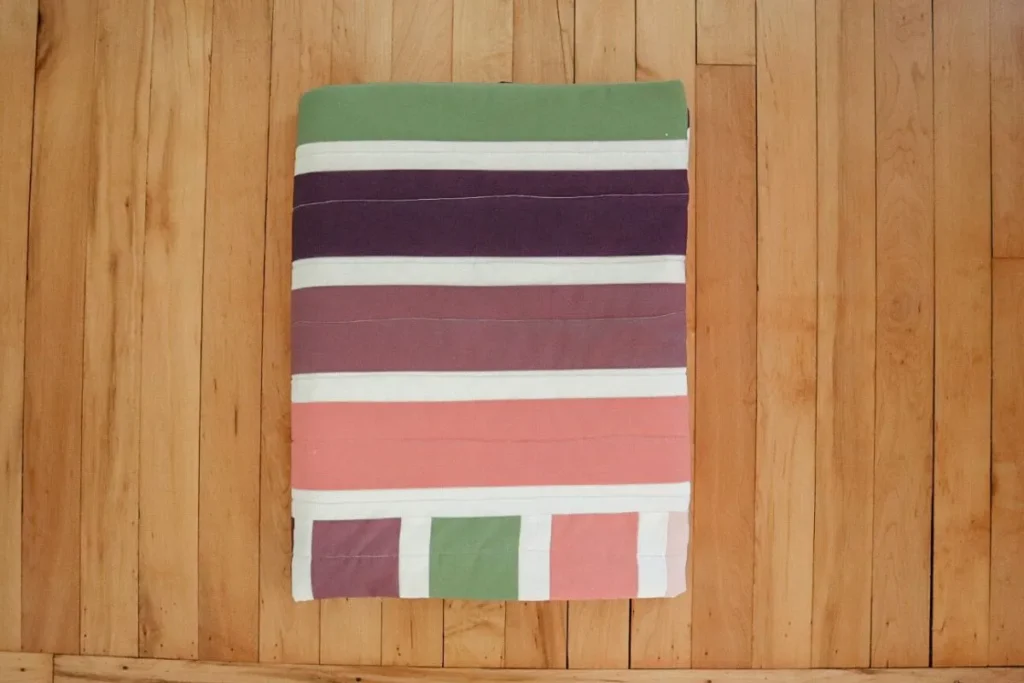
Now you have a nicely folded quilt that is ready for storage.
How Should You Store Your Quilts?
Storing your quilts in the right environment can help preserve them and lengthen their life. There are several things to keep in mind when you are looking for quilt storage solutions.
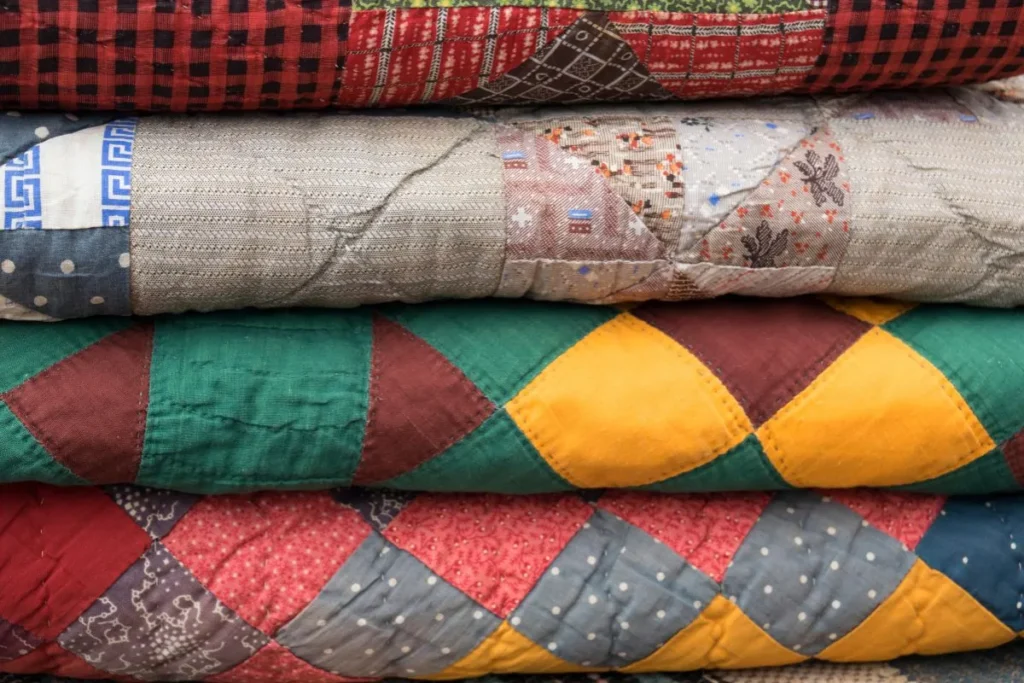
Here are a few quilt storage do’s and don’ts:
Do: Store your quilt flat. The best way to store your quilt is flat on a bed. This is the only way your quilt can “breathe” and have no fold lines. However, this isn’t a realistic storage solution for everyone, so if you must fold your quilt to store it, use the bias folding technique mentioned earlier.
Do: Store your quilt in a temperature-controlled space. Storing a quilt in extreme conditions can shorten the overall lifespan of the quilt. Try to store your quilts in your home instead of an attic or garage if possible.
Do: Store your quilt out of direct sunlight. If a quilt is stored in direct sunlight, it will fade the fabric and lead to a more overall dull-looking quilt. Seasonal display on a quilt ladder or in a sunny bedroom is not much to worry about, but you don’t want your long-term storage solution to be within a shot of the sun’s rays.
Do: Regularly re-fold your quilt while it’s in storage. If it’s a seasonal quilt that you take out each year, remember to fold it differently when you put it back. Quilts in permanent storage should be refolded every 2 years to keep them in pristine condition.
Don’t: Store your quilt in airtight plastic containers or bags. You may use vacuum-sealed bags for seasonal storage of household items like bedding or winter coats, but this is not a good storage solution for quilts. The lack of air can damage your quilt if it’s stored in these types of containers long-term. The plastic bags can also create moisture which can damage your quilt.
Quilts keep best with regular use and airing out. If you rotate your quilts with the seasons, this is a great way to ensure that your quilts are getting some air and can be re-folded from time to time.
My favorite way to “air out” my quilts is to display them in my home and rotate them with the seasons. Utilize a windowed cabinet or a quilt ladder to help your quilts last the test of time.
Before You Fold Your Quilt For Storage…
Here are a few things to remember to do before you fold your quilt for storage:
Wash The Quilt: Before long-term storage, it’s best to wash your quilt to make sure there’s no dirt, oil, or pet hair lingering around.
Label The Quilt: If you haven’t labeled the quilt yet, now is the time to do so! Don’t let it sit in storage without a label because let’s be real, you might forget everything about the quilt by the time you get back to it! Get label inspiration with this list of 80+ quilt label sayings.
Photograph The Quilt: Take a photo! If you keep an inventory of your quilts now is the time to snap a picture for your records. And if you haven’t set up an inventory system yet, check out the My Quilts App to help you document your quilts!
I hope this post helped teach you how to fold a quilt on the bias for storage and why it is important for the lifespan of your quilt!
Other Posts You May Like:
How to Fold a Quilt for a Quilt Ladder
80+ Quilt Label Wording Ideas for Gifted Quilts
30 Totally Free Layer Cake Quilt Patterns for Beginners
The Stress-Free Guide to Washing Your Quilts

I like the bias folding for quilt storage. but, what about storing them in cloth bags like pillow cases for seasonal storage or long term?
Thanks for the good info. I’m going to include this information with my quilts that I sell.